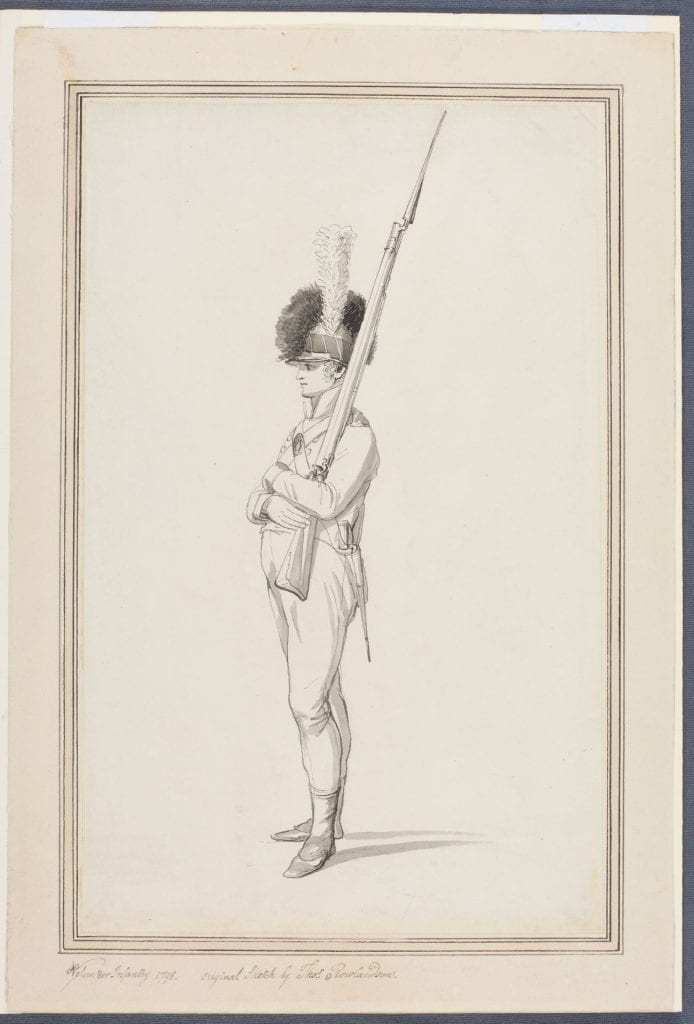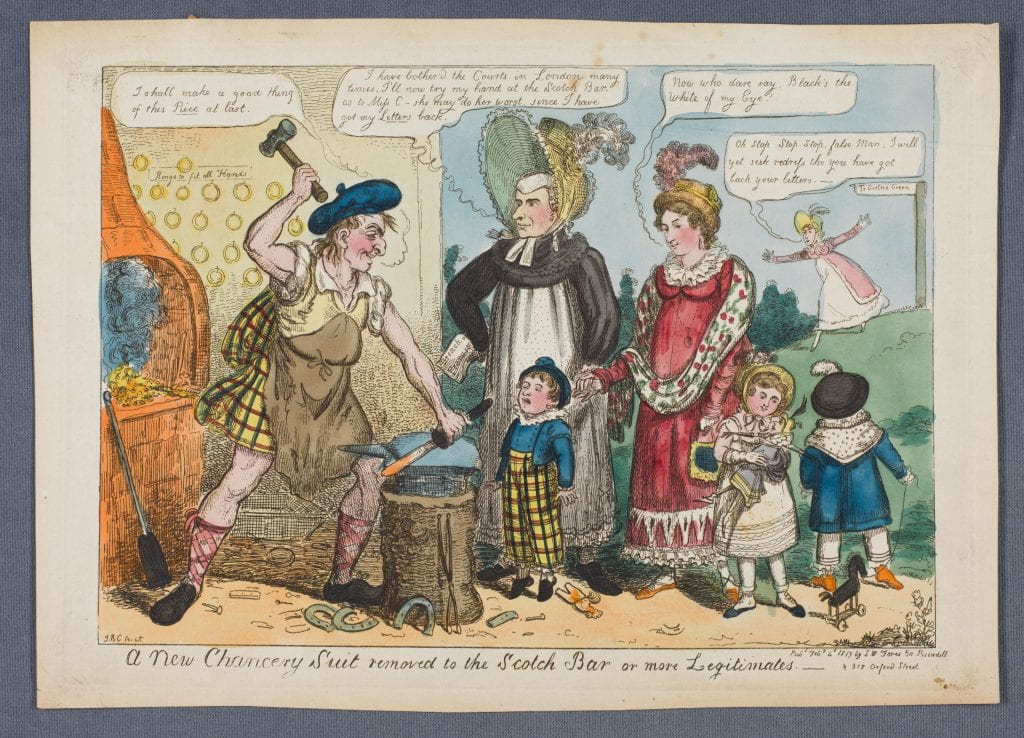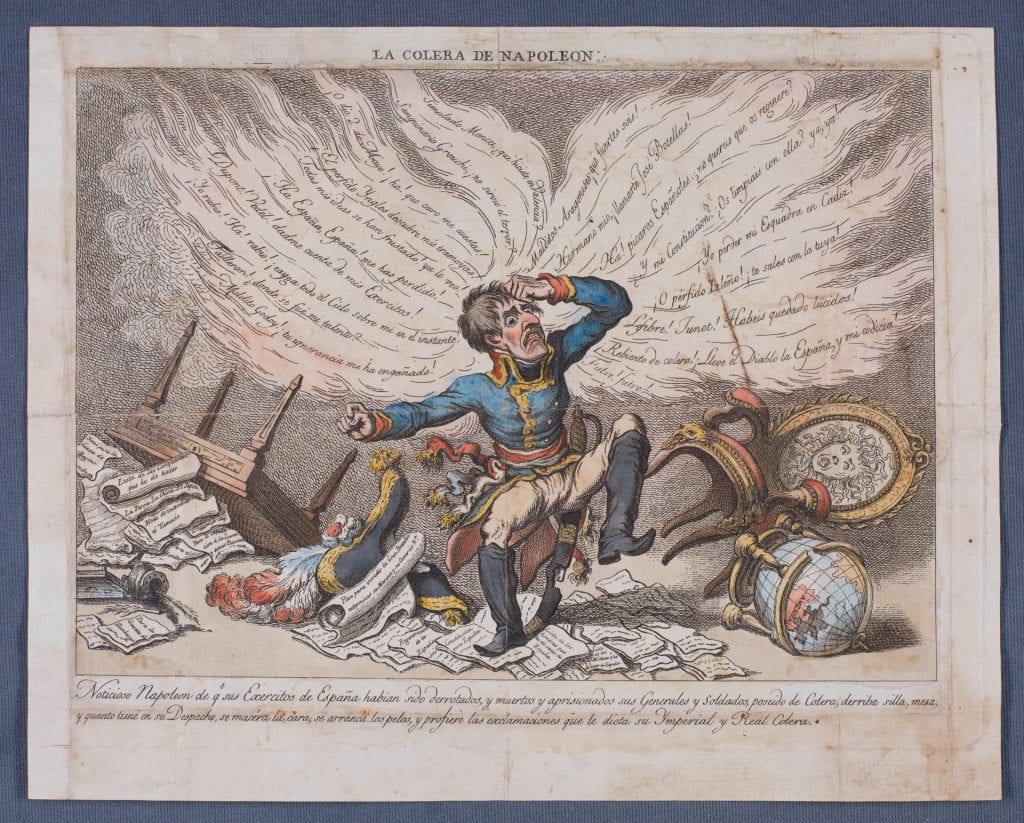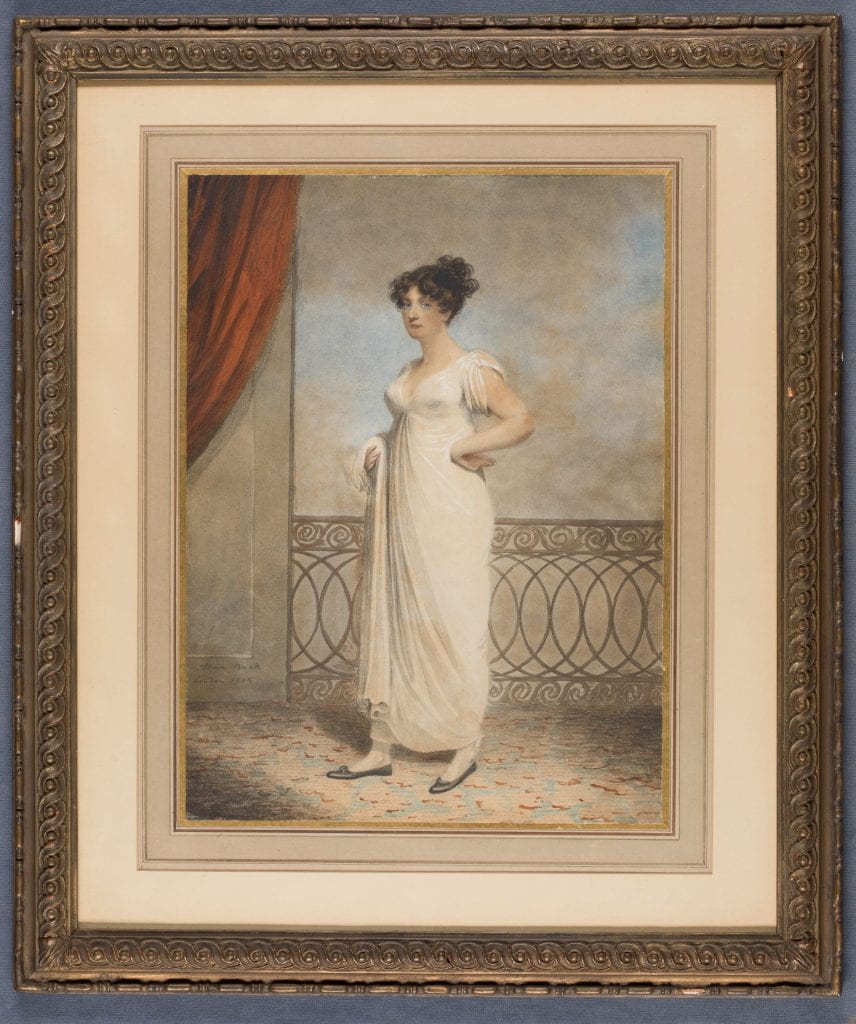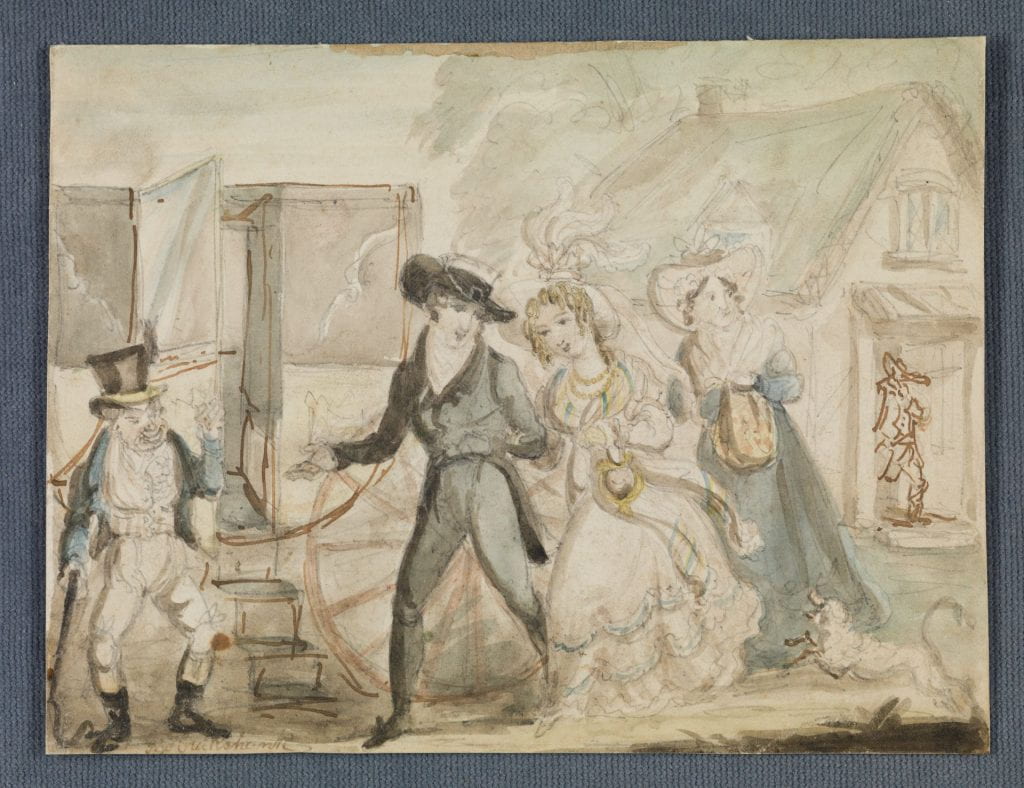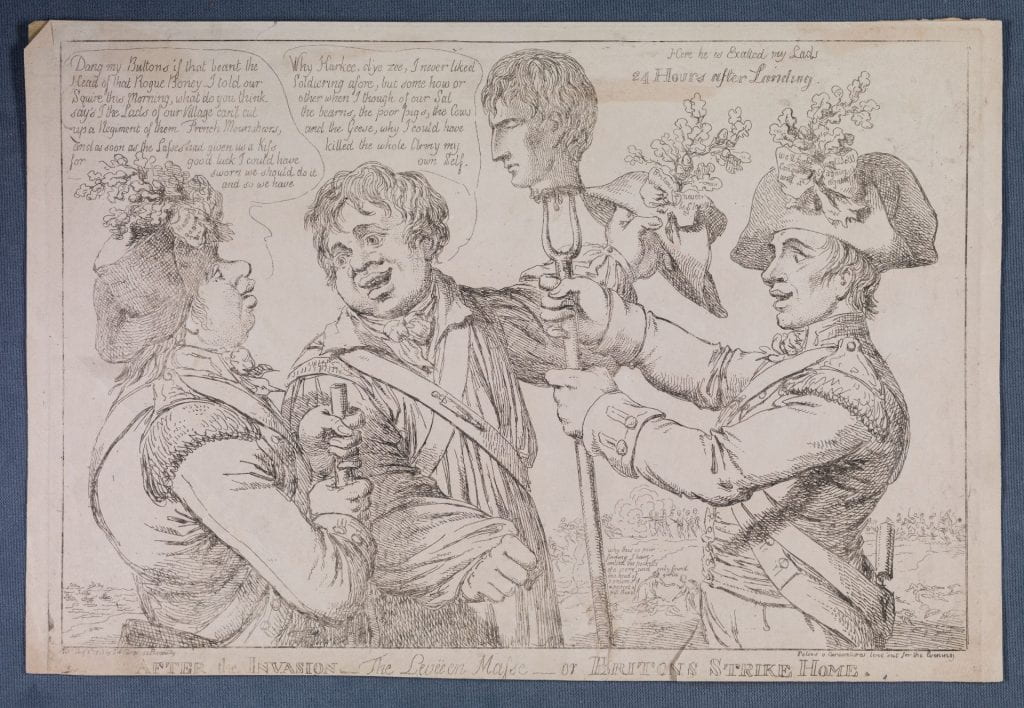
“Three volunteers or militiamen, three-quarter length figures, exult at the head of Bonaparte which one of them (right) holds up on a pitchfork, saying, “Here he is Exalted my Lads 24 Hours after Landing.” The head is in profile to the left, the sharp well-cut features contrast with those of the chubby yokels. The centre figure, holding out his hat, says, turning to the left: “Why Harkee, d’ye zee, I never liked Soldiering afore, but some how or other when I though [sic] of our Sal the bearns, the poor pigs, the Cows and the Geese, why I could have killed the whole Army my own Self.” He wears a smock with the crossed straps of a cartouche-box. The third man (left) in regimentals, but round-shouldered and unsoldierly, says: “Dang my Buttons if that beant the Head of that Rogue Boney – I told our Squire this Morning, what do you think say’s I the Lads of our Village can’t cut up a Regiment of them French Mounsheers, and as soon as the Lasses had given us a Kiss for good luck I could have sworn we should do it and so we have.” All three have hats turned up with favours and oak-twigs, the favours being inscribed respectively (left to right): ‘Hearts of Oak’; ‘Britons never will be Slaves’, and ‘We’ll fight and We’ll Conquer again and again’. In the spaces between these foreground figures is seen a distant encounter between English horse and foot and French invaders, who are being driven into the sea, on which are flat-bottomed boats, all on a very small scale. Two women search French corpses; one says: “why this is poor finding I have emtied the pocketts of a score and only found one head of garlic 9 onions & a parcel of pill Boxes.” Cf. British Museum Satires No. 8145.”–British Museum online catalogue.
- Printmaker: Williams, Charles, active 1797-1830, printmaker.
- Title: After the invasion [graphic] : the levée en masse, or, Britons strike home.
- Publication: [London] : Pub. Augt. 6th, 1803, by S.W. Fores, 50 Piccadilly, [6 August 1803]
Catalog Record
802.08.06.01+
Acquired April 2023



